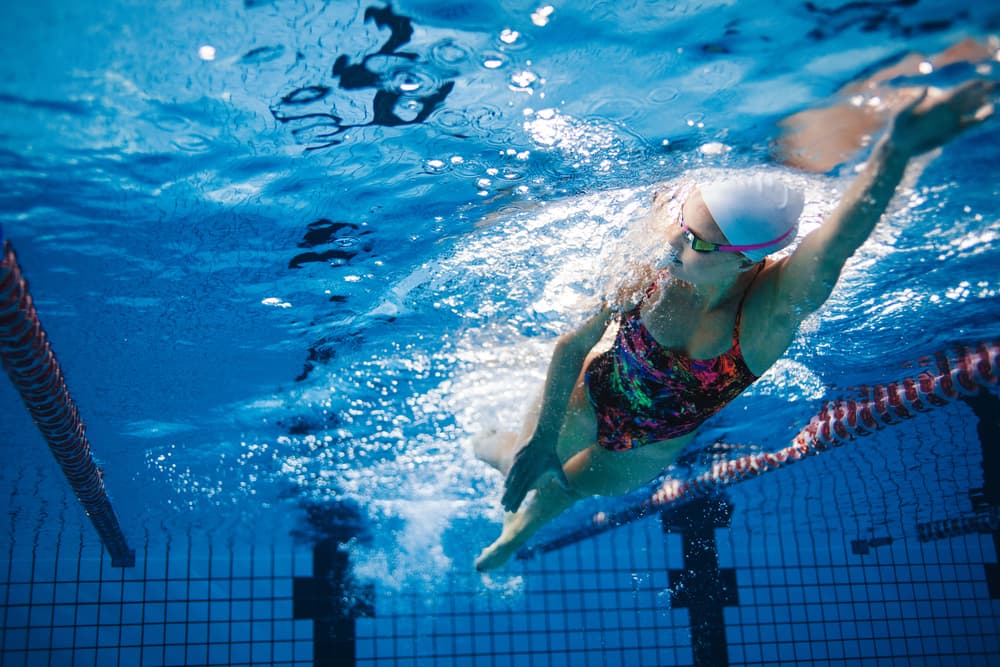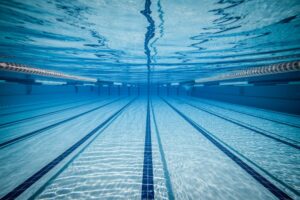Swimming Workouts for Different Fitness Levels

Swimming offers a fantastic workout for people of all condition levels, blending cardiovascular training with muscle strengthening. For those searching for a ‘fitness center with pool near me,’ structured swimming workouts can be an ideal way to improve your health, whether you’re just starting out or are a seasoned swimmer.
How do you structure a swimming workout?
Creating a swimming workout that aligns with your level and goals is key to a successful aquatic exercise regime. Here’s a detailed guide to structuring swimming workouts for various stages.
1. Beginners: Laying the Groundwork
For those new to swimming, focus on:
- Familiarizing yourself with the water and basic swimming techniques.
- Starting with short sessions of 10-20 minutes, slowly increasing over time.
- Introducing rest intervals after every few laps to recover.
- Using swimming aids like kickboards to build confidence and improve technique.
2. Intermediate Level: Increasing Stamina and Skill
Intermediate swimmers should aim to:
- Enhance endurance by extending sessions to 30-45 minutes.
- Reduce rest intervals gradually and increase the number of laps.
- Practice a variety of strokes to develop overall strength and technique.
- Include interval training for improved speed and endurance.
3. Advanced Swimmers: Maximizing Performance
For the advanced level, challenge yourself with:
- Longer sessions exceeding an hour, focusing on intensity and endurance.
- Fine-tuning stroke techniques for efficiency and speed.
- Incorporating specialized drills like sprints, distance swims, and mixed stroke sets.
- Engaging in cross-training activities to complement swimming.
4. Essential Warm-Up and Cool-Down
A good workout includes:
- A 5-10 minute warm-up to prepare the body. This could be light swimming or dynamic stretches.
- A similar duration for cool-down, with slower swimming or static stretching to help muscles relax.
5. Regularity and Diversity
Maintaining a routine is crucial:
- Swim 2-3 times weekly for consistent improvement.
- Vary workouts to prevent plateaus – mix up strokes, distances, and speeds.
6. Specific Goals for Each Session
Tailor your workouts by:
- Setting achievable objectives, whether it’s increasing lap count, enhancing technique, or improving speed.
- Keeping goals specific and measurable for motivation and progress tracking.
7. Attuning to Your Body’s Signals
Adjust your workouts by:
- Listening to your body’s response during and after each swim.
- Modifying intensity or duration based on physical cues to prevent injury.
8. Utilizing Equipment for Targeted Training
Incorporate tools like:
- Fins to improve leg strength and technique.
- Paddles for upper body strength and stroke efficiency.
- Pull buoys to focus on upper body training.
9. Progress Tracking
Monitor your improvement by:
- Timing your swims or counting laps.
- Regularly assessing if your goals need adjusting based on your performance.
10. Professional Instruction and Community Support
Enhance your skills with:
- Coaching or swimming classes for personalized training and tips.
- Joining a swim group or community for motivation and social engagement.
11. Nutrition and Hydration
Don’t forget:
- Proper nutrition and hydration play a crucial role in performance, especially in a physically demanding activity like swimming.
12. Rest and Recovery
Balance workouts with:
- Adequate rest days for muscle recovery.
- Engaging in light activities on non-swimming days to maintain overall condition.

Where can I find a reliable fitness center with a pool near me?
Looking to dive into a structured swimming workout routine? Join us at Plunge San Diego and take advantage of our comprehensive aquatic programs. If you want to incorporate swimming into your workout routine or to combine it with a different sport or discipline, we’re here to help. From beginner classes to advanced training, our facility caters to all levels, helping you achieve your swimming goals. Contact us today to learn more about our swimming programs!